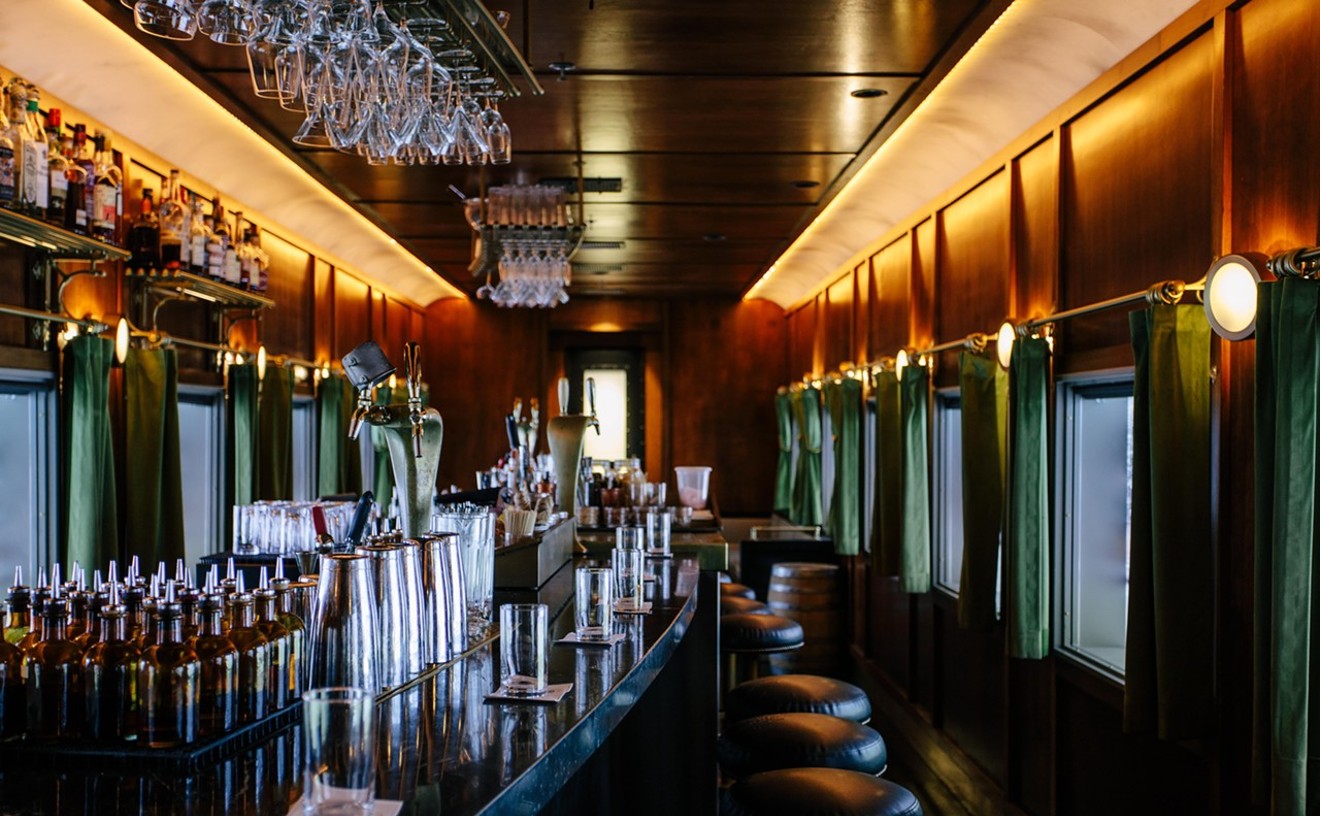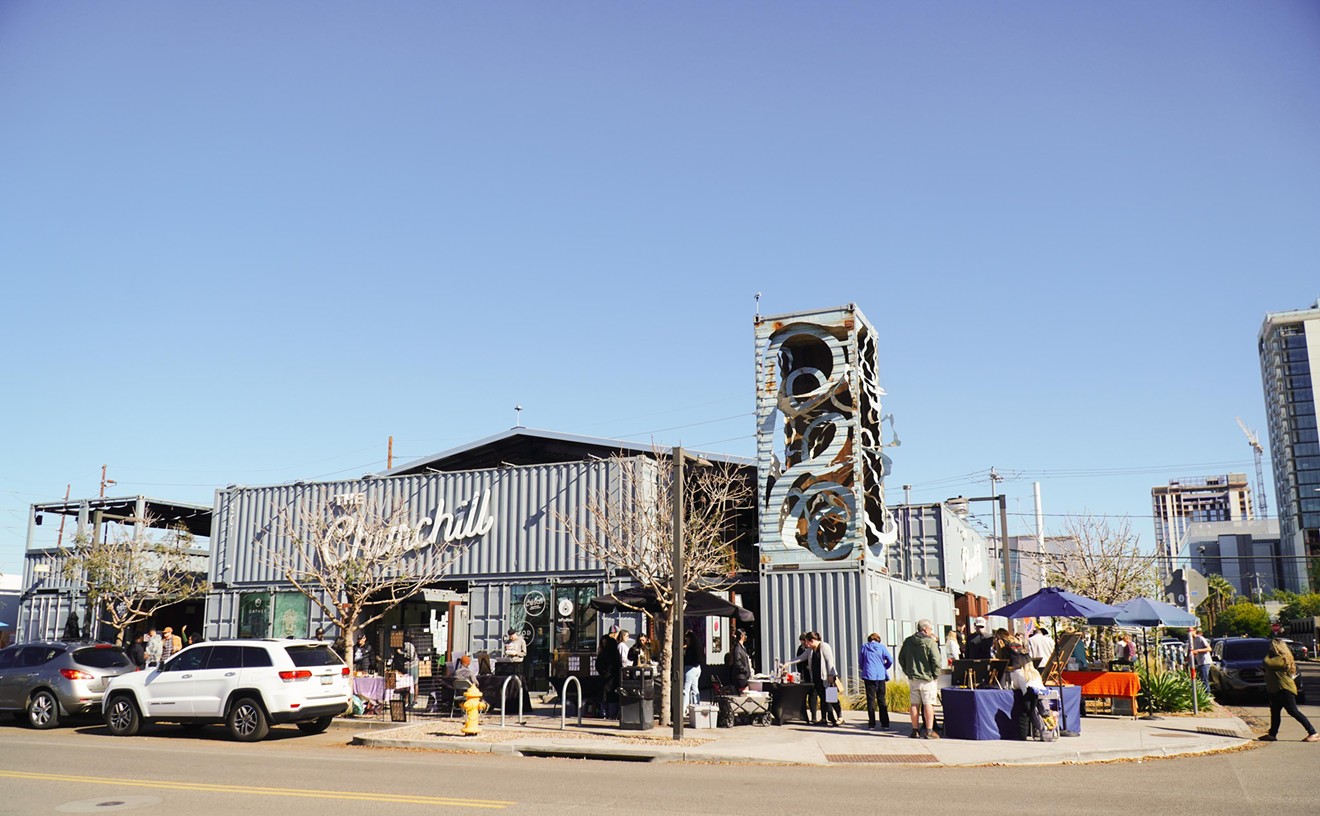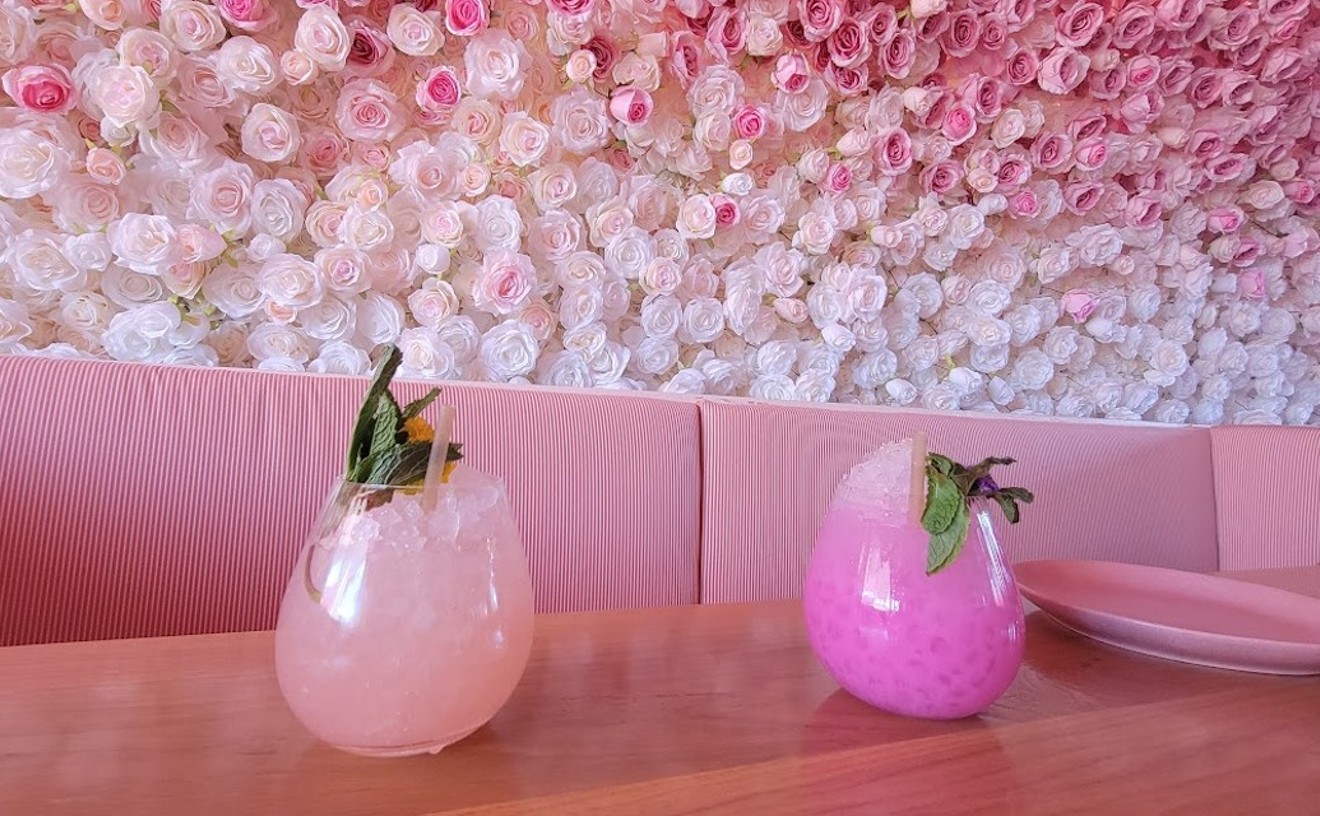Though he's new to Central Phoenix, James Beard Award-nominated chef Kevin Binkley is no stranger to the Phoenix food scene.
Since opening Binkley's Restaurant in 2004, the molecular gastronomist has added three more restaurants to the mix -- the most recent opening in Scottsdale about a month ago. It comes less than a year after he opened Bink's Midtown, the chef's first restaurant not located in Cave Creek or Carefree. Housed in a cozy cottage in Central Phoenix, the restaurant's menu is heavy on vegetables and focuses on themes of local, seasonal, and fresh. And though "all you can eat" isn't a phrase you'd expect to hear in any of his kitchens, Bink's Midtown started a weekly event in May offering just that.
Every week, diners gather for Pig on the Patio to dig into heaping plates of freshly cooked pork and side dishes of vegetables, rice, or potatoes.
See also: How to Make Bourbon with Arizona Distilling Co.
As you can imagine, roasting a whole pig is a lengthy process and it begins, rather unceremoniously, with Bink's Midtown sous chef Guillermo Magana lugging out the restaurant's wooden roasting box. Emblazoned with "La Caja China" on the side, the aluminum-lined box can hold a 100-pound pig, more than a dozen chickens or eight racks of ribs at any one time.
"It's basically a wooden Dutch oven," he says as he pours about 20 pounds of charcoal on top of the box.
Inside lies half a pig -- he opens it to reveal one side of a pig that was divided right down the middle, from nose to tail -- that amounts to about 75 pounds of uncooked animal. Magana starts to heat the heap of black rock with a small blowtorch, the sharp smell of gas cutting through fresh post-rain air. On this damp morning, Magana knows it will be particularly difficult (read: time-consuming) to get the charcoal heated and the pig fully cooked.
"It's not really something you can do just by time," he says. "And it depends on the weather."
In general, he says, it takes about 30 minutes just to get the box heated, then another five to get the pig to the correct internal temperature. The last hour of roasting serves mainly to make sure the skin is cooked to a crisp. Because Magana brines the pig overnight, he says, overcooking isn't really a concern.
"We try to cook it past the necessary time because, with the brine, it won't dry out," he says. "Actually, it will just become more tender."
On the day of our visit, Pig on the Patio has a Spanish theme. So Magana prepared two quarts of a brine appropriate to the theme (water, paprika, sugar, salt, lemon, and spices) in which the pig soaked overnight.
Once the heated coals can sustain themselves, the waiting game begins. It will be about an hour before they have mostly turned from black to white, at which time Magana will add another eight pounds to the pile. In another hour, he'll replenish the heap again, and that's when he'll begin thinking about flipping the pig.
It's noon by the time Magana cracks open the box to reveal a brown and black half-pig, four hours into the roasting process. With the help of an extra set of hands, the pig is flipped and Magana goes in search of the sharpest knife he can find. He then begins making a series of shallow crosshatched cuts in the pig's skin, scoring the skin just enough to let the fatty juices run out during the last leg of the roasting.
"That way it sort of bastes itself," he says.
Finally, he closes the box and adds one last mound of charcoal to the top. The additional fuel ensures that the box will get fiercely hot again, allowing the skin to achieve perfect crispness.
When he opens the box again two hours later, a perfectly roasted half pig awaits. Magana gingerly plucks a few pieces of meat from the animal's back leg with a pair of tongs.
"It's hot," he warns, offering a piece a juicy white meat, "so be careful."










